Traveling Iceland in a Campervan: The Ultimate Guide
Traveling Iceland in Campervan: Why It’s the Best Way to Explore
Traveling in Iceland in a campervan gives you freedom that few other journeys can offer. Instead of sticking to strict hotel bookings or rushing between towns, you carry both your transport and accommodation wherever you go. With the dramatic landscapes of Iceland changing around every bend, the ability to stop, park, cook, and rest whenever you like transforms an ordinary holiday into a wonderful trip full of flexibility and discovery.
We keep things simple: all our vehicles are manual, we don’t provide 4×4 or F-road capable models, and you can add extras to make life easier on the road. For many travelers, this balance of transparency, comfort, and independence makes renting a camper the smartest way to visit Iceland.
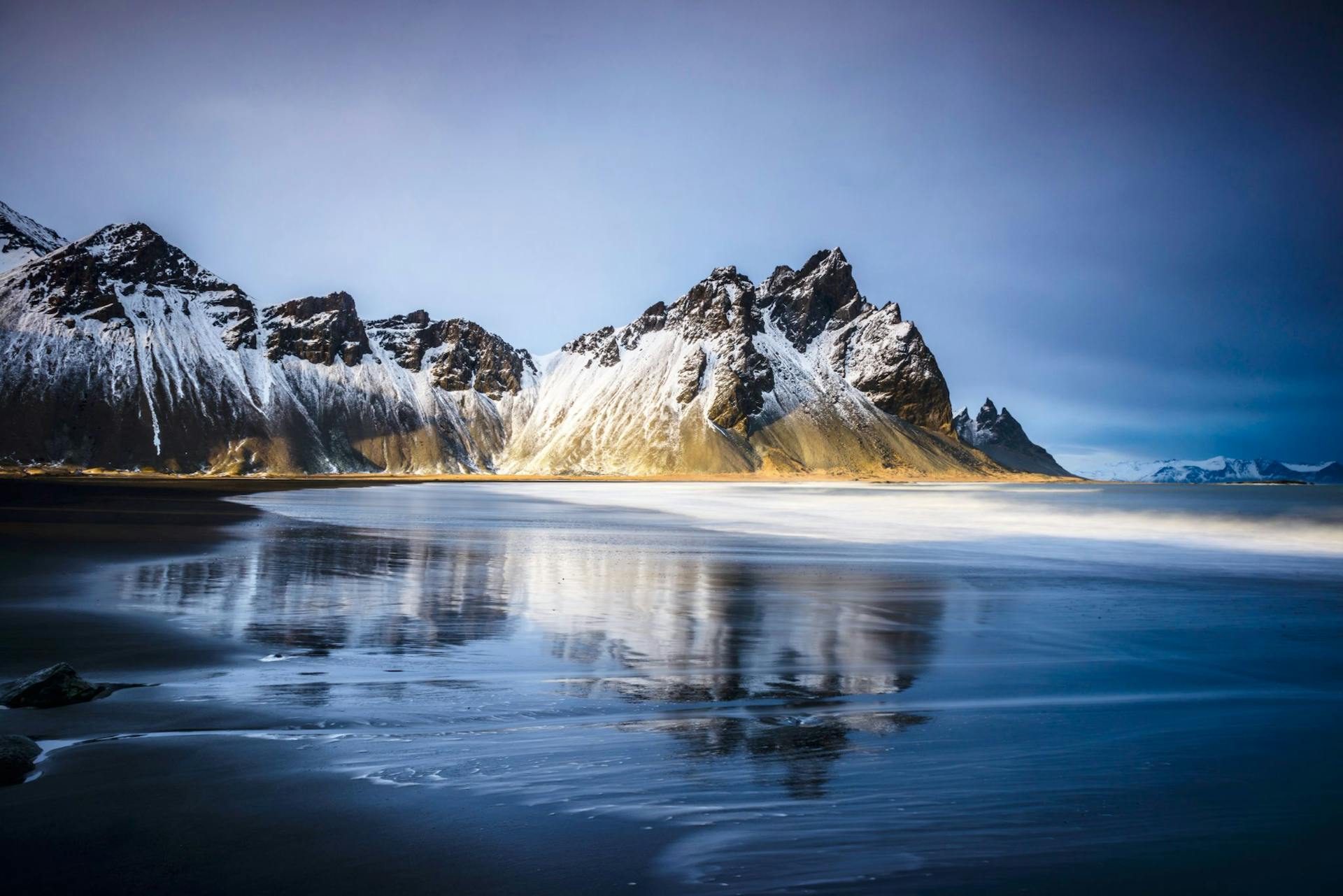
How to Organize a Campervan Trip Around Iceland
A campervan trip requires some planning, but it’s far less rigid than a package tour. The ring road loops around the country and gives you access to many of Iceland’s best attractions, from geysers to glaciers. Most people plan for 7–10 days to complete the circuit, though you can shorten or extend your schedule depending on how much time you have.
When you plan your route, think about how far you want to drive each day, which campsites you’ll stay at, and which highlights matter most to you. Some visitors prefer a relaxed pace, stopping often for hikes and hot springs, while others enjoy a road trip style with longer drives and fewer stops. Either way, a camper makes it possible.
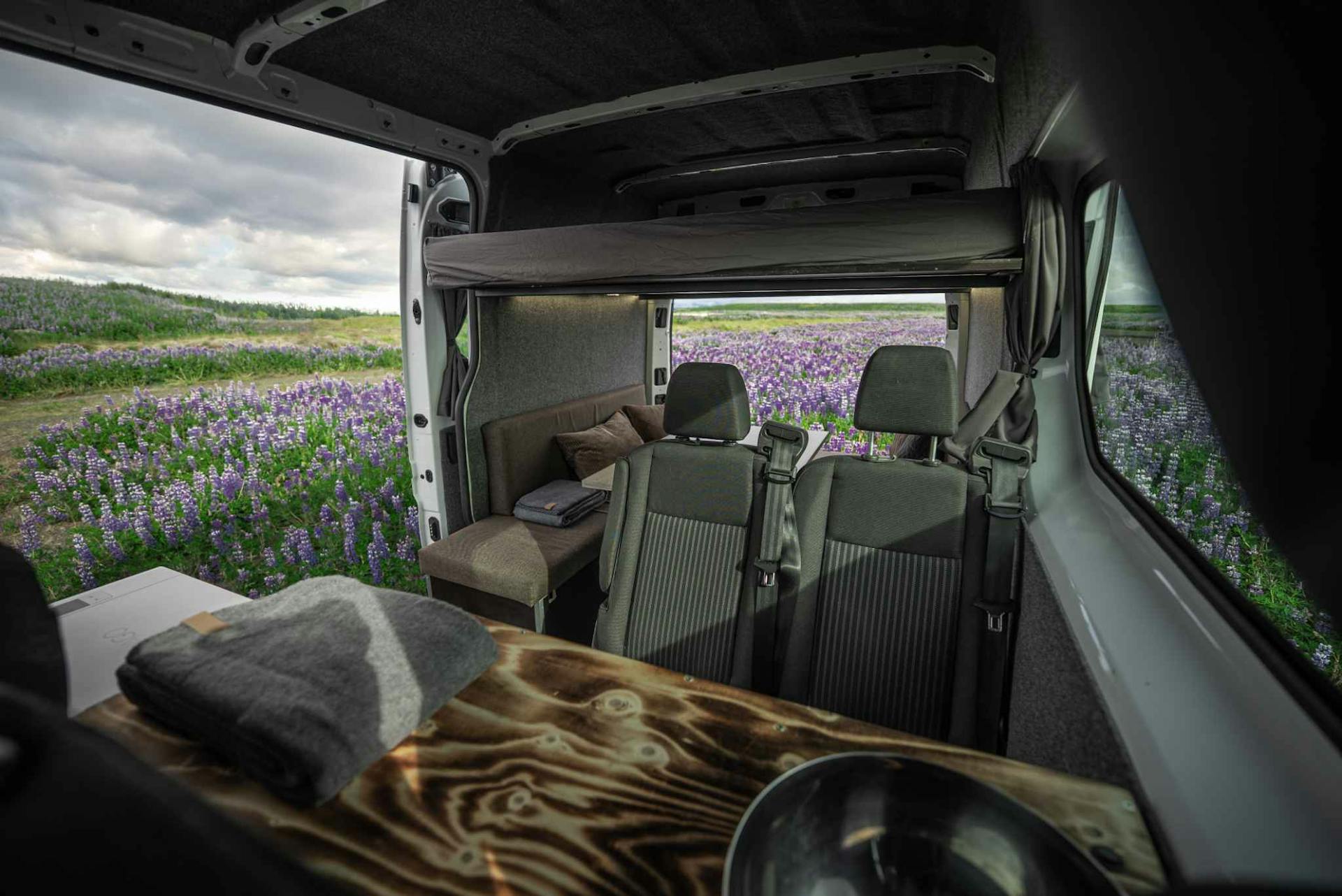
Choosing the Right Camper Van for Your Adventure
Every traveler has different needs, and the choice of camper van reflects that. Couples may prefer a compact model with enough storage space for essentials, while families or groups often choose a bigger van with more sleeping spots. A smaller camper is easier to handle on Iceland’s narrow roads, but a larger one gives you more space for comfort.
It’s worth remembering that Iceland’s weather can change quickly, and even in summer a cold night is common. Having the right camper with insulation, heating, and the ability to cook indoors can make all the difference between a restless evening and a cozy night’s sleep.
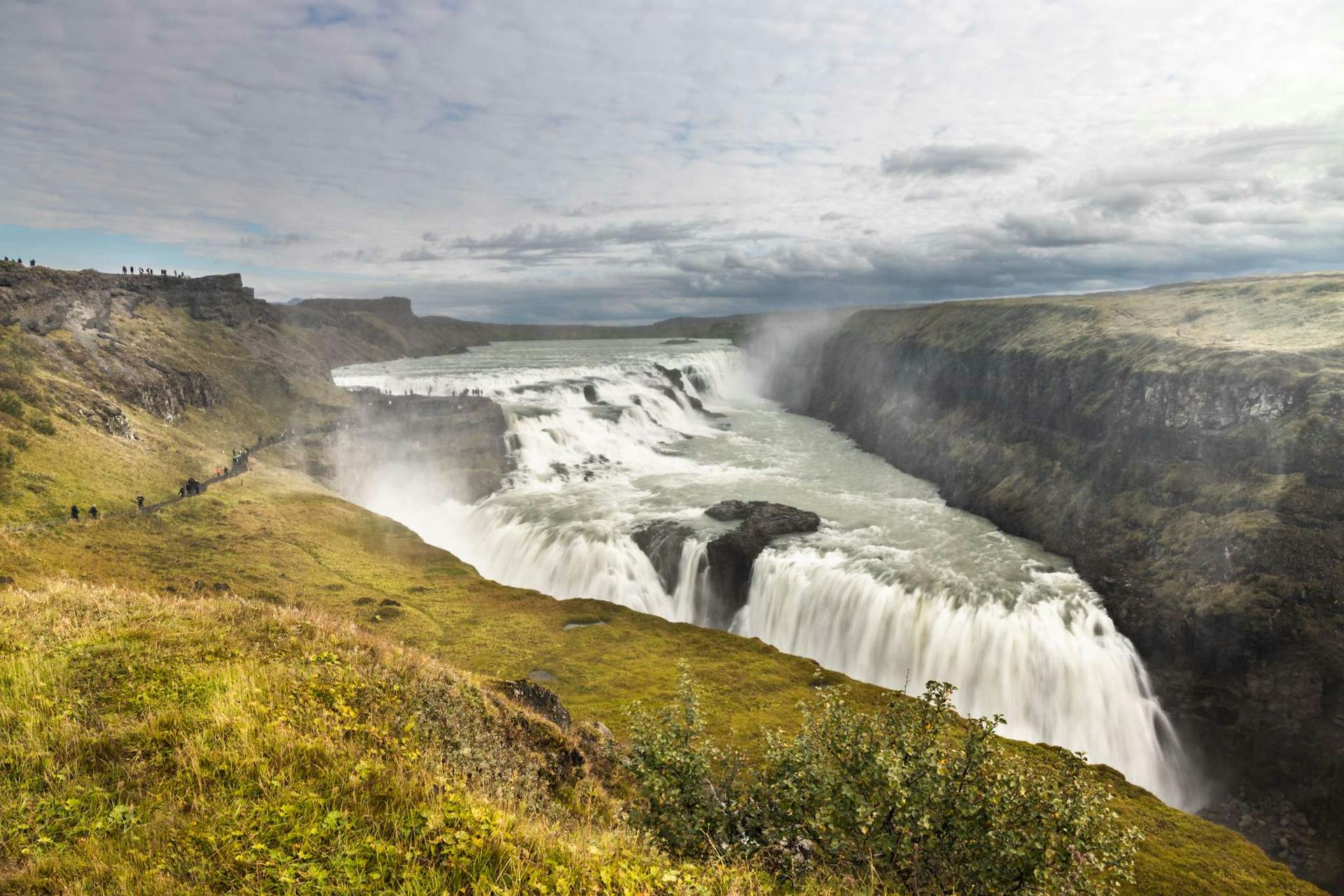
Why a Campervan in Iceland Gives You Maximum Freedom
Hotels along the ring road fill up quickly, especially in peak season, and costs add up fast. With a campervan in Iceland, you can move on when you’re ready, not when your hotel booking dictates. You’re free to explore remote corners, linger longer at a beautiful waterfall, or chase the northern lights without worrying about check-in times.
This flexibility is exactly why so many travelers prefer campers over a standard rental car. You’ll also meet other campers at sites, swapping stories and tips that can make your trip even richer.
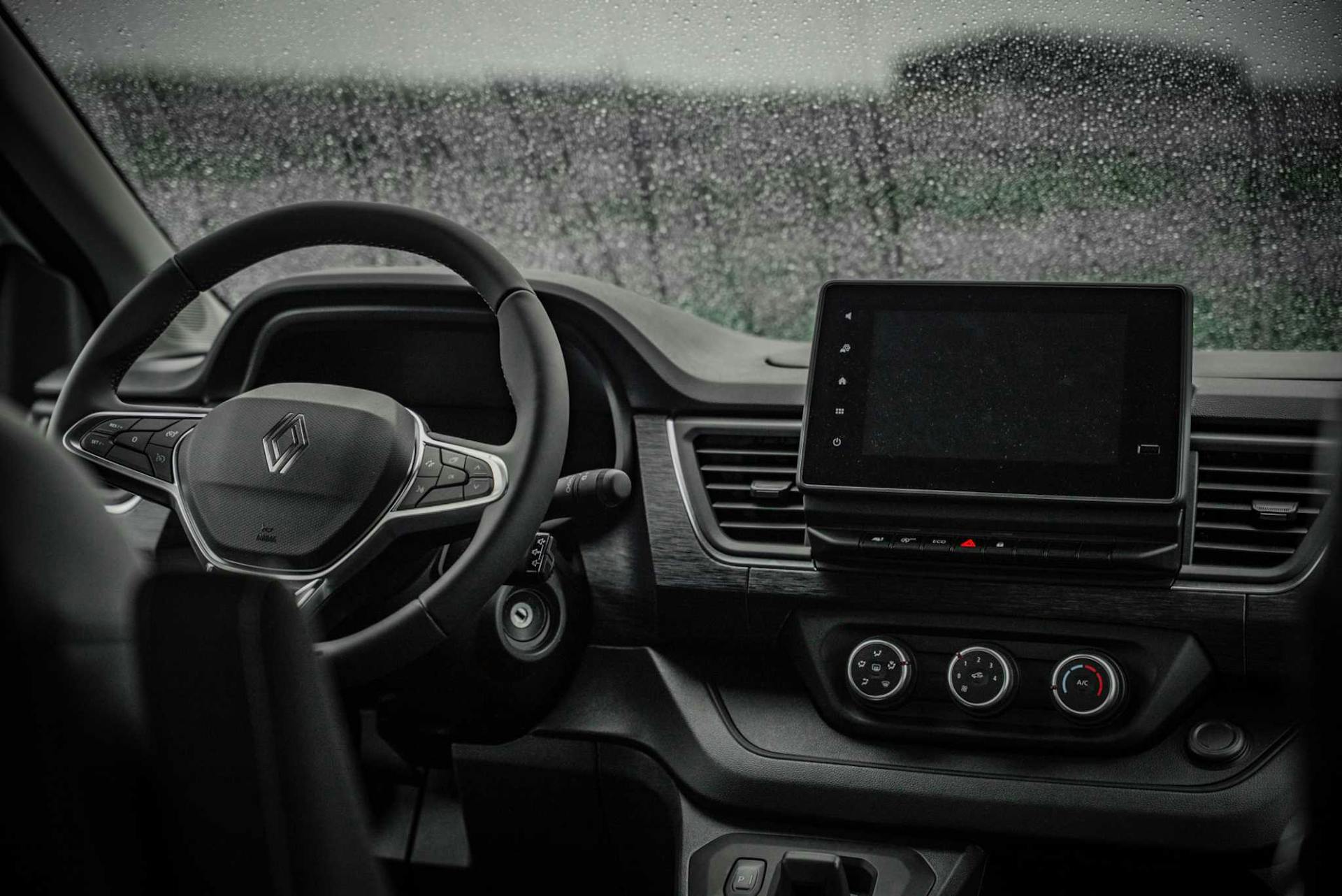
Your First Night in a Campervan: What to Expect
Your first night in a camper can feel exciting and a little different. After arriving at Keflavík airport, we’ll pick you up and hand over your keys. From there, most people spend their first day exploring Reykjavík or heading toward the south coast for their initial campsite.
Expect to set up your bedding, cook a simple meal, and test out your gear. Many campsites provide a hot shower, charging facilities, and even communal kitchens, so you can settle in comfortably. Once you get used to the rhythm, you’ll quickly see why so many travelers say their camper trip was the highlight of their Iceland adventure.

Driving the Golden Circle Before Heading Out on the Road Trip
The Golden Circle is often the first stop for travelers beginning their journey. Located close to Reykjavík, this loop includes Þingvellir National Park, Geysir hot spring area, and Gullfoss, another beautiful waterfall. Because it’s a short drive from the capital, many people explore it on their very first day before moving onto the longer stretches of the ring road.
Parking is straightforward at the major sights, though keep in mind that parking lots can fill quickly during peak season. Having a camper means you can arrive early, beat the crowds, and enjoy the views with fewer people around.
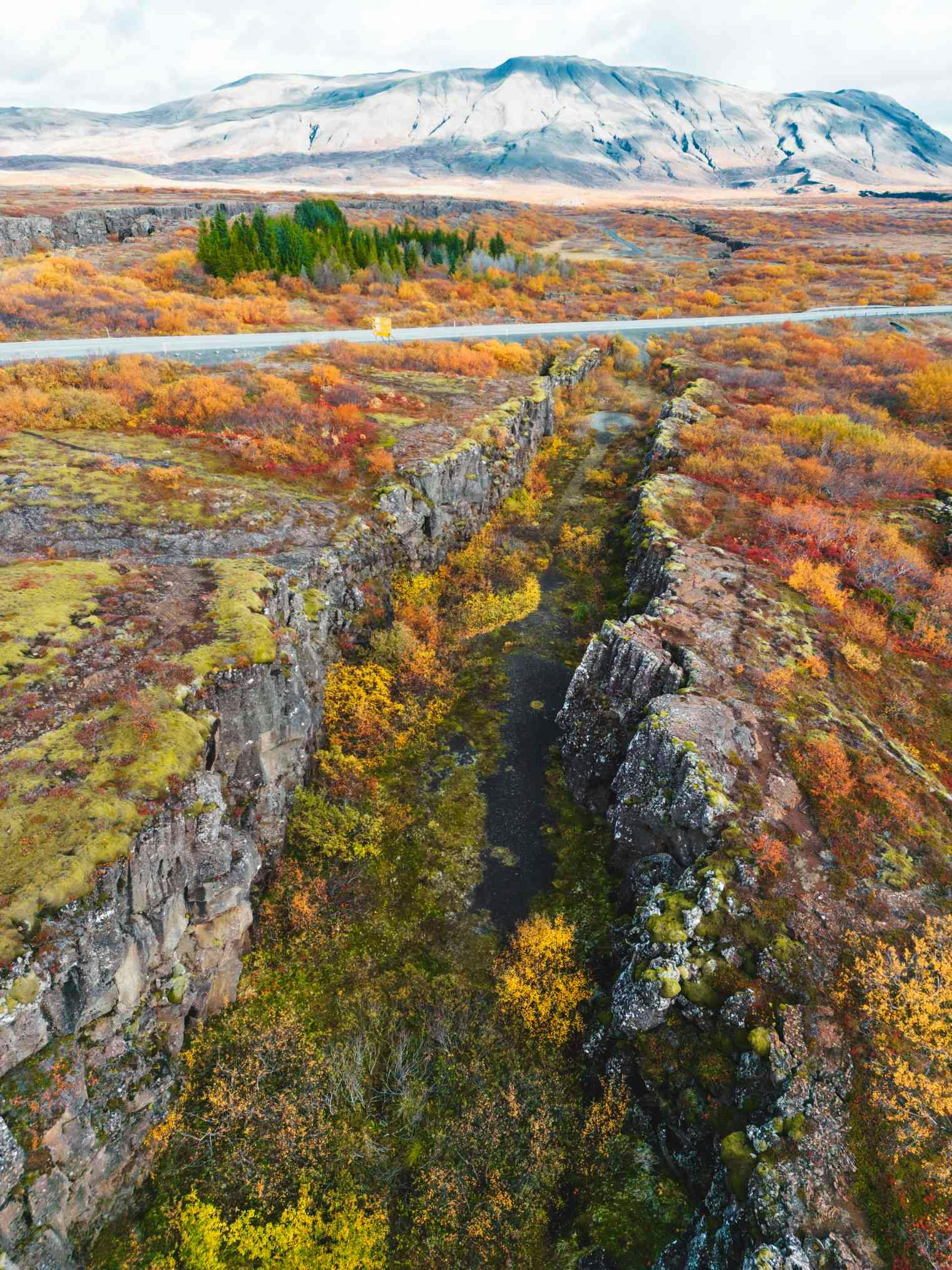
Exploring the Iconic Diamond Beach on the South Coast
No iceland road trip is complete without a stop at Diamond Beach. Located near Jökulsárlón Glacier Lagoon, this striking black sand beach is scattered with icebergs that wash ashore, glistening like diamonds in the sun. It’s one of the most photographed places in the country and a must-see on any ring road trip.
The drive to Diamond Beach from Reykjavík takes several hours, but with a camper you can split it into manageable sections. Spend a few nights along the south coast, enjoying other highlights like Skógafoss, Seljalandsfoss, and Reynisfjara beach along the way. By the time you reach Diamond Beach, you’ll already be fully immersed in the magic of Iceland’s landscapes.
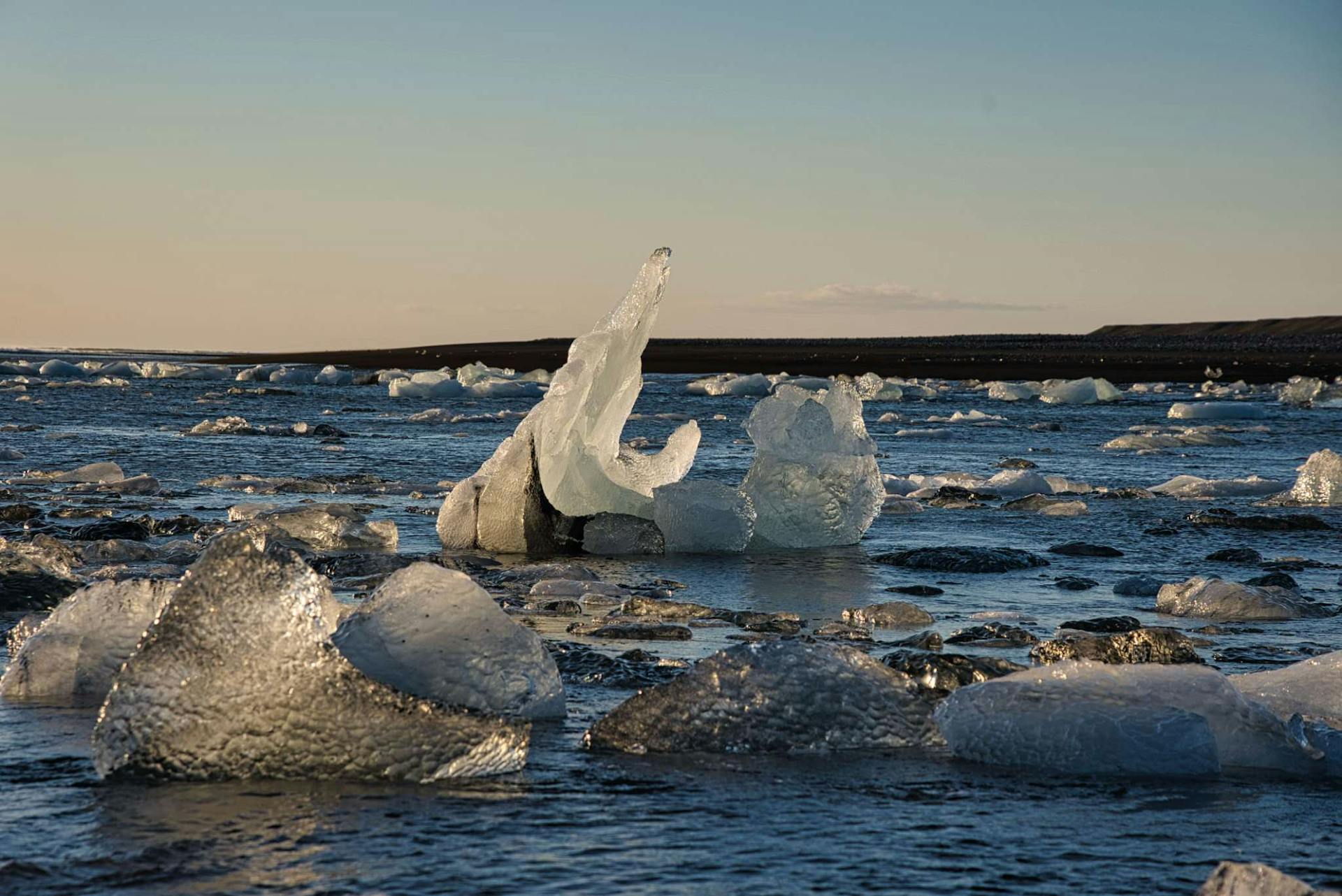
Hiking in Skaftafell National Park With a Camper Base
Skaftafell National Park is another essential stop on your journey. Part of the larger Vatnajökull National Park, it offers incredible hiking routes, glaciers, and waterfalls. The famous Svartifoss, with its huge basalt columns, is only a short walk from the campsite.
Staying in your camper here makes things easy: you’ll wake up near the trails, have access to campsite amenities like a hot shower, and be ready for a day of exploration. With many campsites available, you can plan to spend a night or two in the area without stress.

Visiting Fjaðrárgljúfur Canyon on Your Campervan Journey
A highlight along the iceland ring road is Fjaðrárgljúfur canyon, a winding gorge with moss-covered walls and a river flowing below. It’s one of those places that feels straight out of a fantasy novel. Parking is available in a car park nearby, and from there it’s a short walk to viewpoints overlooking the canyon.
Travelers in campers love this stop because you can take your time—whether it’s waiting for the perfect light for photos or simply soaking in the view without rushing to another hotel. Stops like these make a campervan trip so rewarding.
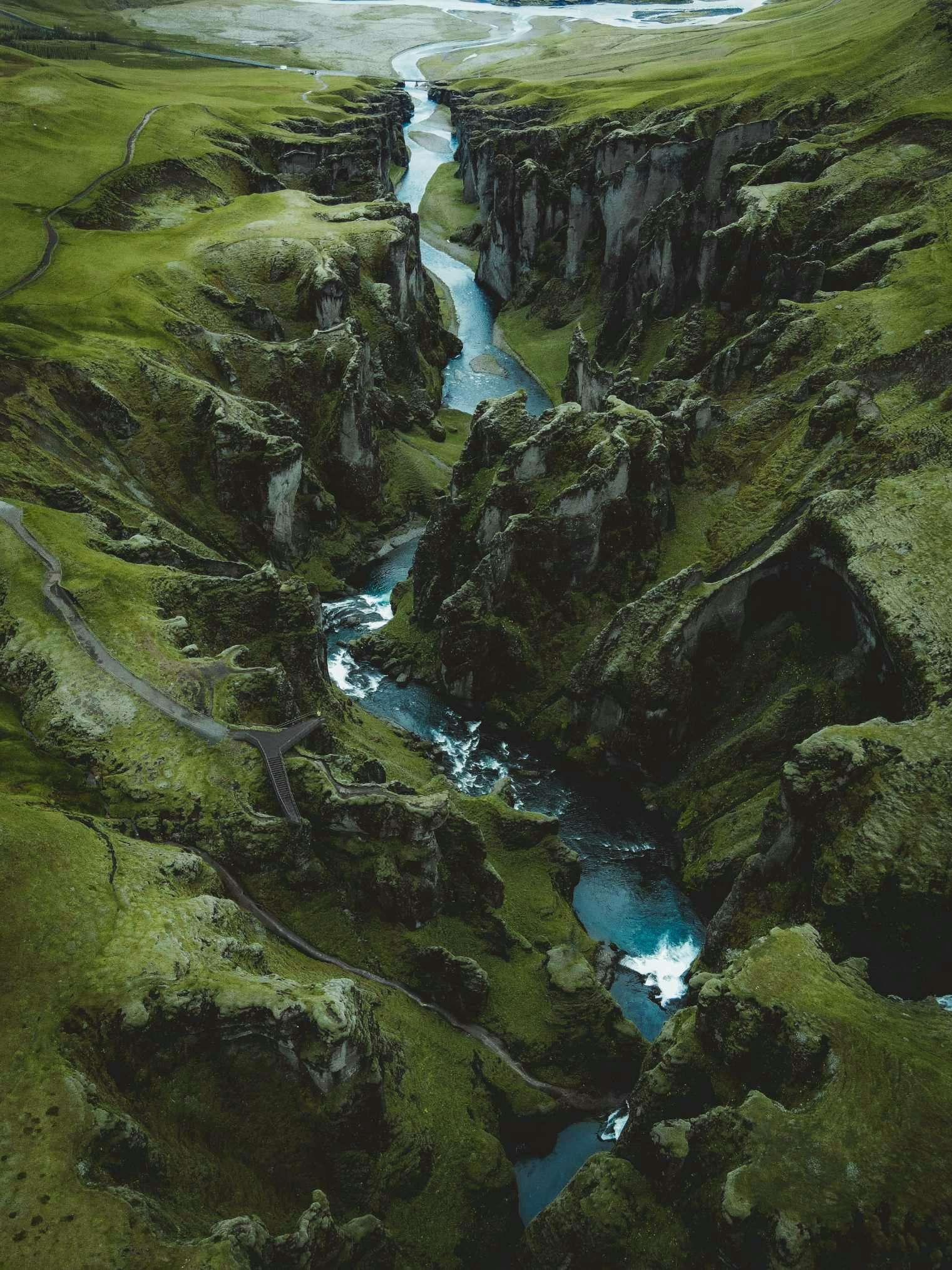
What to Know About the Iceland Ring Road in a Camper van
The Iceland ring road (Route 1) is the backbone of any camper journey. This well-maintained highway circles the island, connecting most major attractions and towns. For many travelers, completing a ring road trip is the ultimate adventure.
Driving a campervan in Iceland along this road is straightforward, but keep in mind the speed limit is usually 90 km/h on paved sections and lower on gravel stretches. Respecting limits is crucial for safety and for avoiding hefty fines. Because you’re in a camper, you’ll also need more time for braking and handling curves, so relax and enjoy the slower pace.
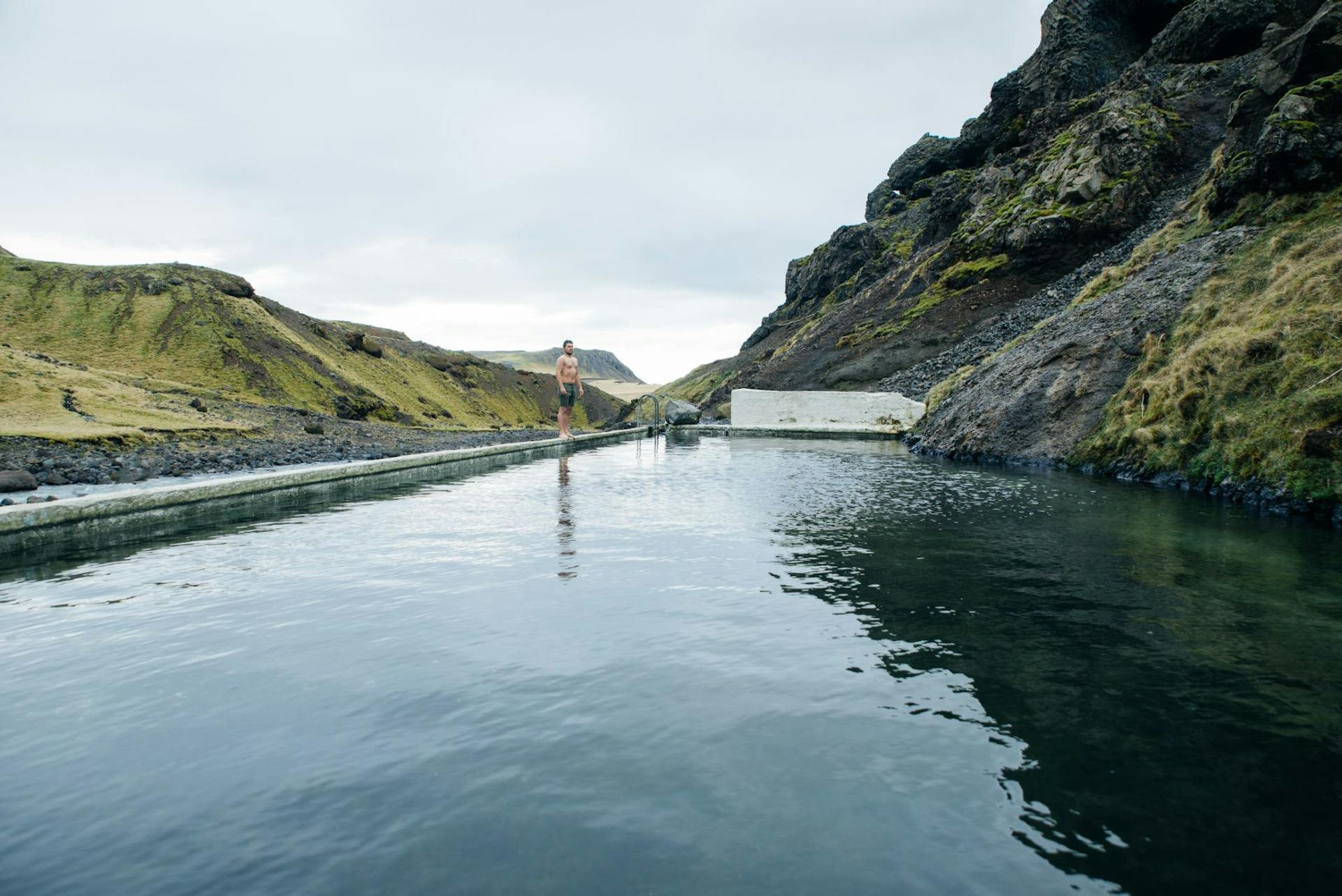
Essential Iceland Road Trip Tips for Camper Travelers
An iceland road trip in a camper is very different from a city holiday. Here are some important things to remember:
- Fueling: Always fill up at a gas station when you can. In some remote corners, you might drive for hours before finding the next pump.
- Food: Stock up on groceries in bigger towns. While many campsites have small shops, prices can be higher and selection limited.
- Driving Time: Don’t underestimate distances. What looks like a short drive on the map may take longer because of photo stops, weather, or road conditions.
- Book Campsites: In peak season, it’s smart to book campsites in advance. While not all campsites require booking, the most popular ones near landmarks can fill quickly.

Navigating a Gravel Road Safely in Your Campervan
At some point, your route may take you onto a gravel road. These stretches are common in the countryside and can surprise first-time drivers. Reduce your speed, keep both hands on the wheel, and give other campers or cars plenty of space when passing.
Because we don’t offer 4×4 or F-road capable vehicles, avoid F roads and mountain passes. These are strictly for four-wheel drive. Stick to the main roads, and you’ll still see an incredible variety of landscapes.

Why a Dacia Duster Rental Car Is Not the Same as a Camper Experience
Some travelers consider a Dacia Duster or similar rental car for their trip. While this type of car may handle gravel roads better and is sometimes allowed on certain F roads, it doesn’t replace the cozy convenience of a camper. With a car, you’ll need hotels or guesthouses each night. With a camper, you carry your bed, kitchen, and storage space wherever you go.
Choosing a camper is about embracing flexibility, freedom, and comfort—something a small car simply can’t provide.
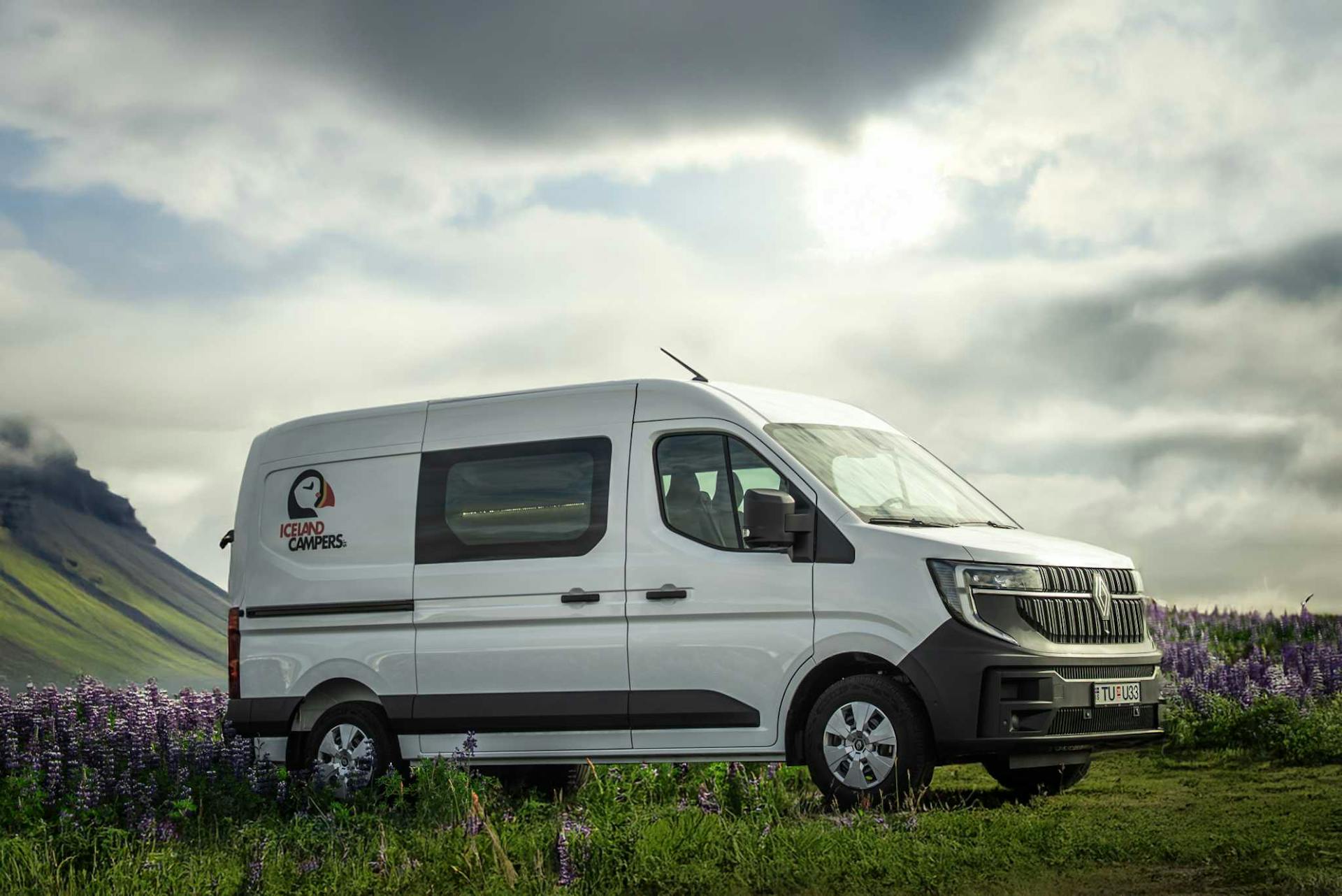
Parking Your Camper in a Car Park or Parking Area
When visiting major attractions like waterfalls or canyons, you’ll usually find a car park or parking area nearby. These are convenient and often free, though not all will allow overnight stays. That’s why sticking to proper campsites for the night is essential.
During the day, though, you can stop at parking lots to cook a meal, stretch your legs, or grab a photo before continuing your journey. It’s one of the perks of traveling in a camper—you always have everything you need right with you.

Discovering East Iceland by Camper Van
East Iceland is often overlooked by travelers rushing between Reykjavík and the north, but it’s one of the most rewarding regions for camper exploration. The coastline here is dotted with fishing villages, fjords, and remote corners where you’ll find fewer people than along the busier south coast.
Camping in East Iceland offers a sense of solitude. You’ll wake up to the sound of seabirds, cook breakfast with views of dramatic cliffs, and enjoy a slower pace of travel. It’s an ideal stretch to spend a few nights if your schedule allows.
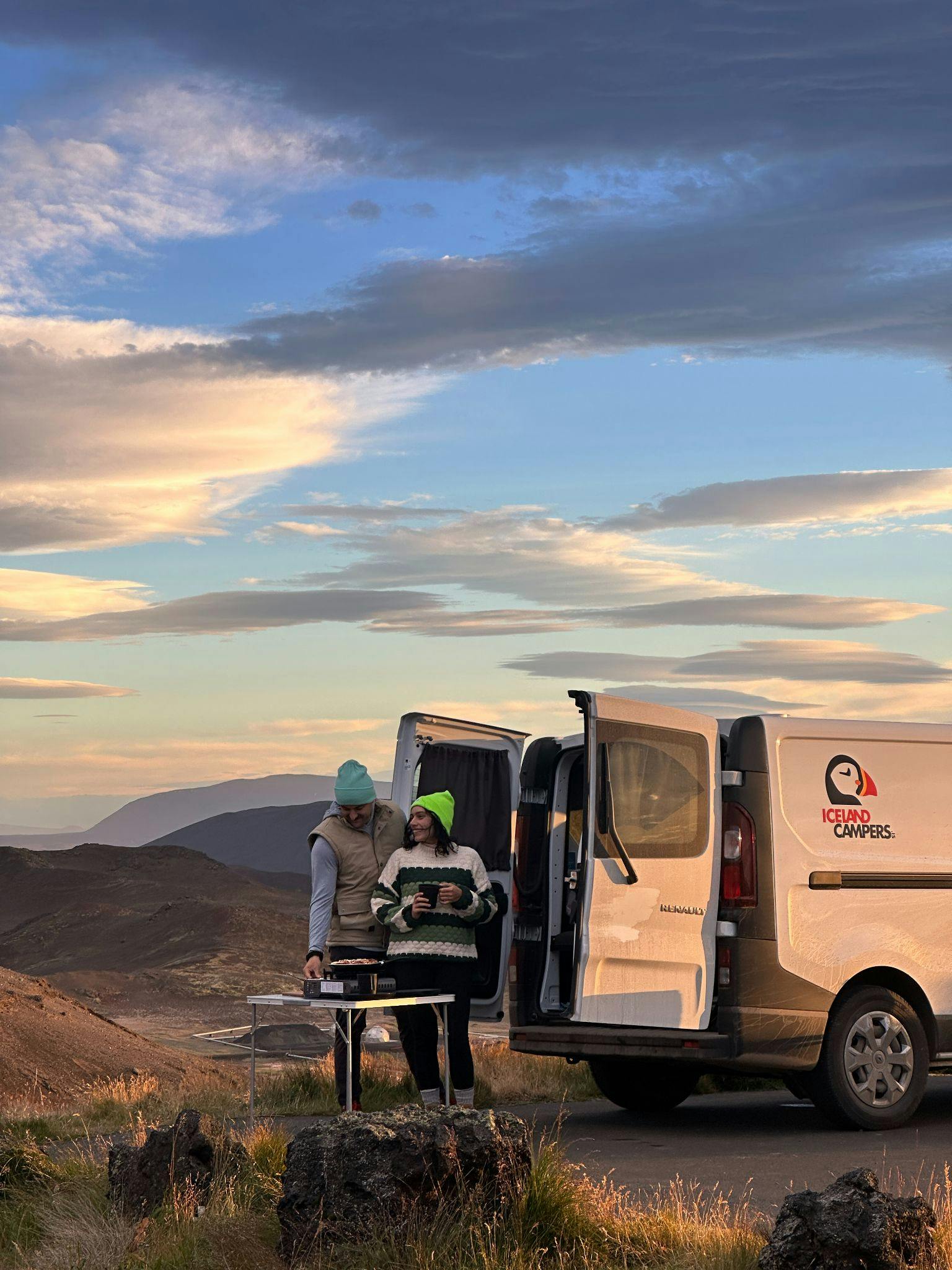
Exploring Remote Corners and National Parks in North Iceland
Heading into the north, the landscapes open into wide valleys, volcanic craters, and geothermal areas. North Iceland is also home to several national parks, hot pools, and some of the country’s best whale-watching spots.
Driving here in a camper feels like true exploration. With long daylight hours in summer, you can enjoy a wonderful trip full of surprises—whether that’s spotting the northern lights in autumn or enjoying a hike under the midnight sun.
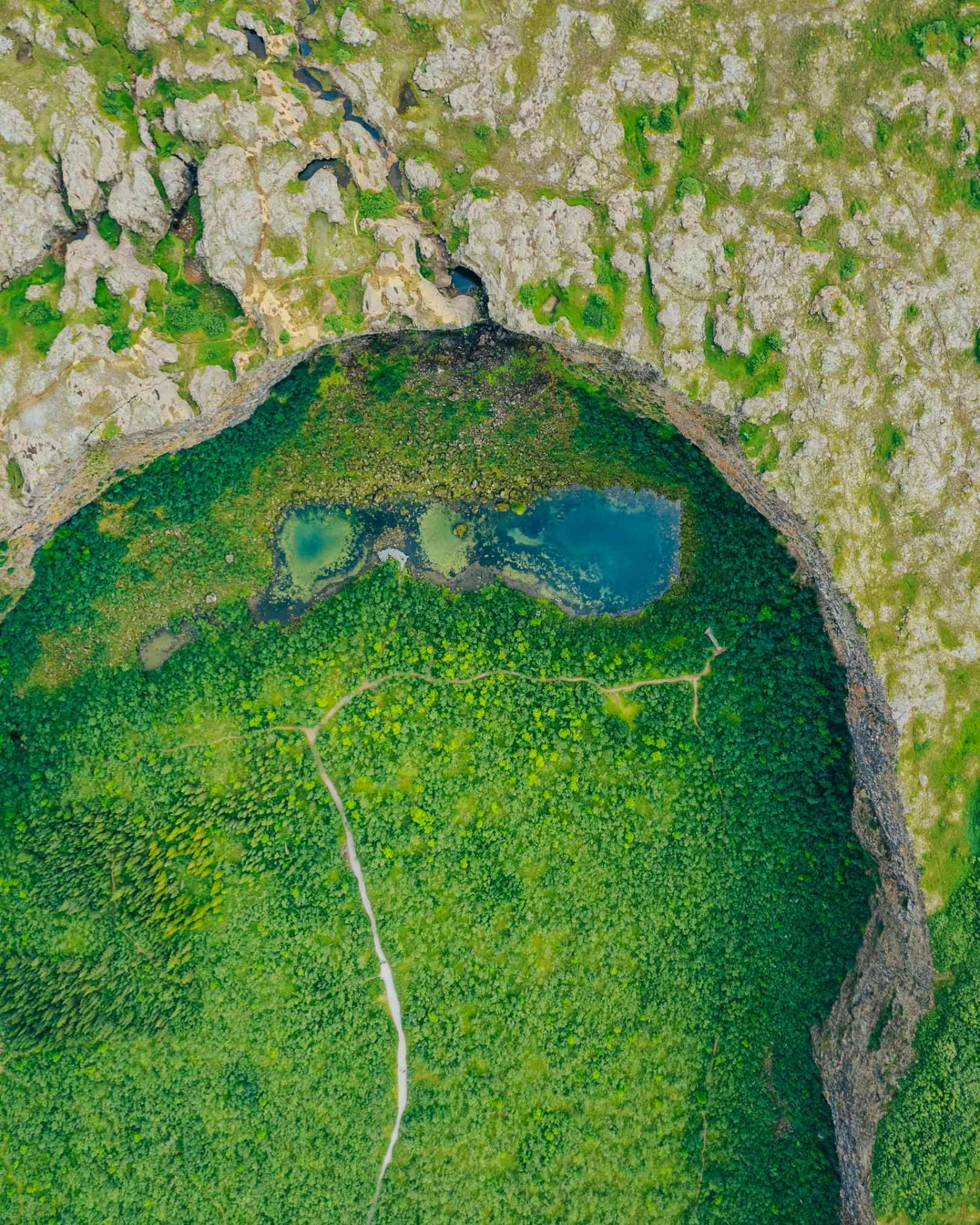
Hidden Gems Along the Ring Road Trip Few Tourists See
Beyond the headline attractions, a ring road trip also brings you to hidden spots. One of these is Stuðlagil Canyon, with its striking basalt formations and turquoise waters. Another is the Viking Café, a quirky stop near Vestrahorn where you can grab a coffee and enjoy stunning views.
Because you have a camper, you’re not tied to a fixed plan. You can take detours, linger at your favourite stops, or drive into remote corners that aren’t on every guidebook’s list. That freedom is what makes campervan travel special.
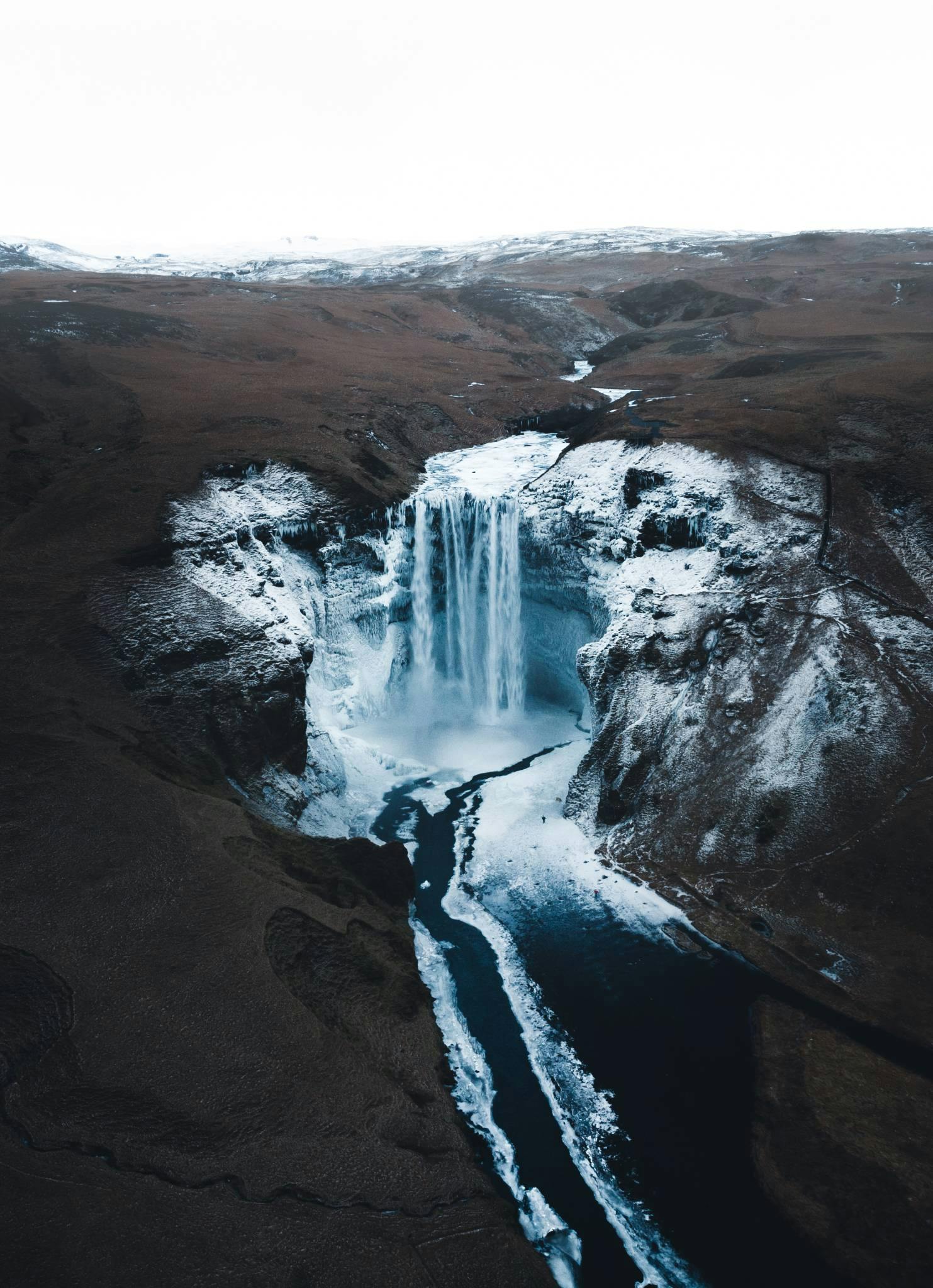
Daily Life in a Camper: Storage Space, Cooking, and Comfort
Living in a camper for a week or more requires some adjustment. You’ll need to be smart with storage space, keeping things tidy so your living area stays comfortable. Cooking is part of the fun—imagine making a simple dinner while overlooking glaciers or black sand beaches.
Bring small comforts, too. Flip flops make campsite showers easier, and a power bank helps keep devices charged when you’re away from charging points. These little items make daily life smoother on the road.
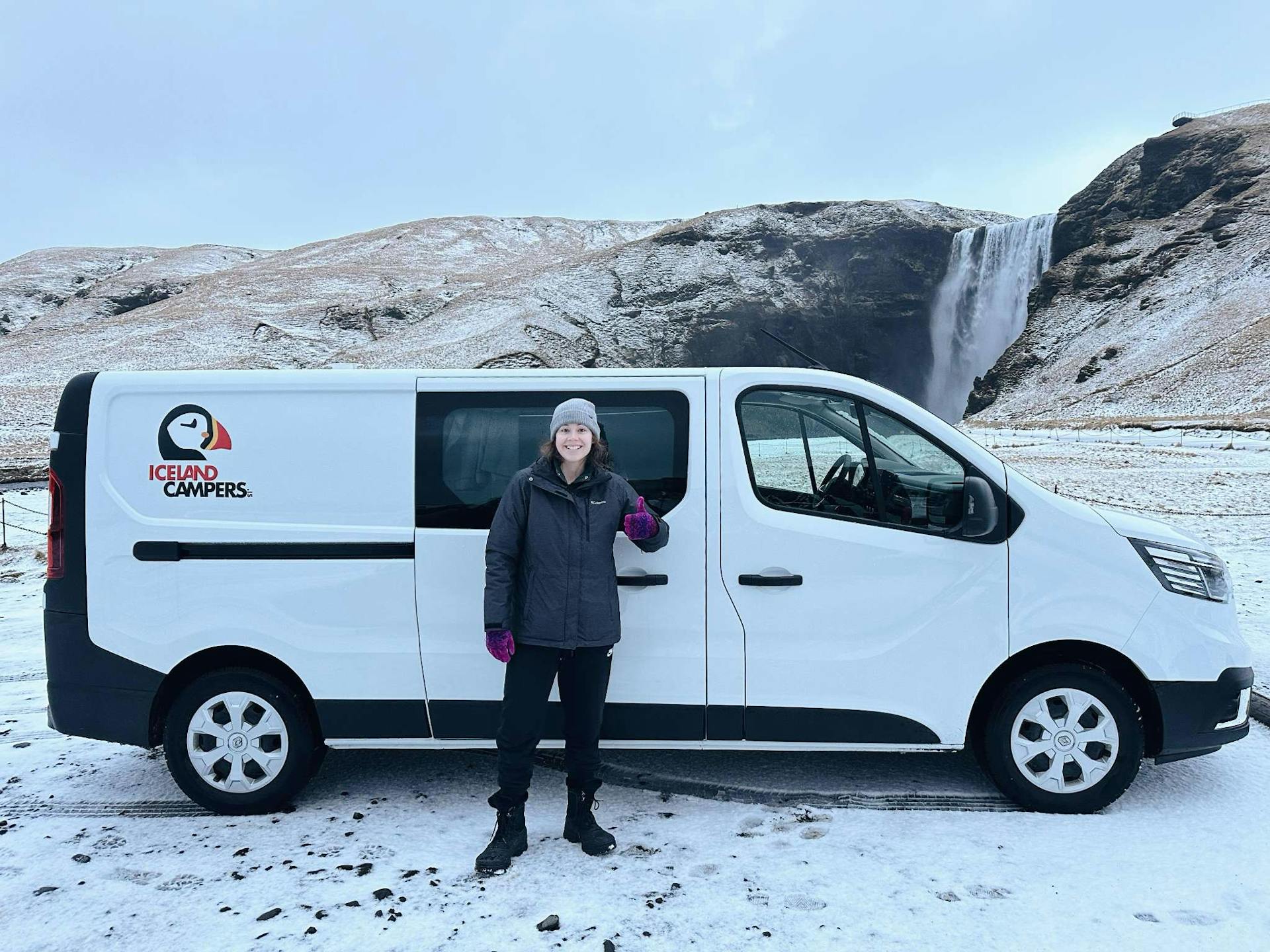
What to Expect From Campsites and Not All Campsites Being Equal
In Iceland, there are many campsites along the ring road, but not all campsites offer the same facilities. Some are fully equipped with bathrooms, kitchens, and laundry. Others are more basic, with just a toilet and water supply.
Most sites have a hot shower, though you may pay a small fee. Some even have Wi-Fi or cooking huts, which are especially useful on nights of heavy rain. That’s why it’s good to mix well-equipped sites with more rustic ones, depending on your comfort level.
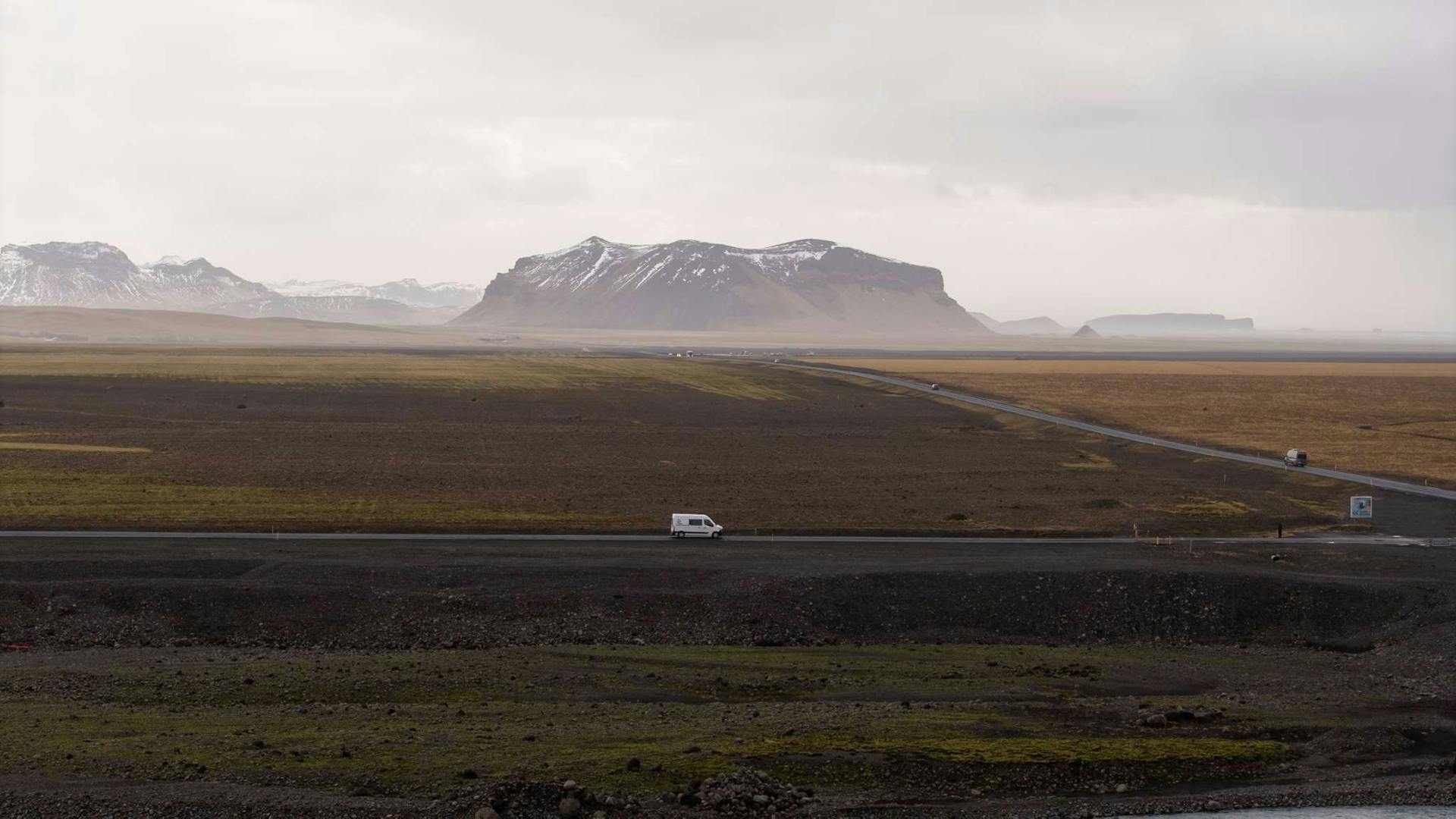
How to Handle a Cold Night in a Campervan in Iceland
Even in midsummer, a cold night can catch you by surprise. Iceland’s weather changes quickly, and temperatures can dip, especially in the north or at higher altitudes.
To stay cozy, make sure you rent bedding or bring your own sleeping bags rated for low temperatures. Using extras like a portable heater or thermal liners helps too. By preparing for chilly nights, you’ll ensure your campervan in Iceland remains a warm retreat no matter the conditions.
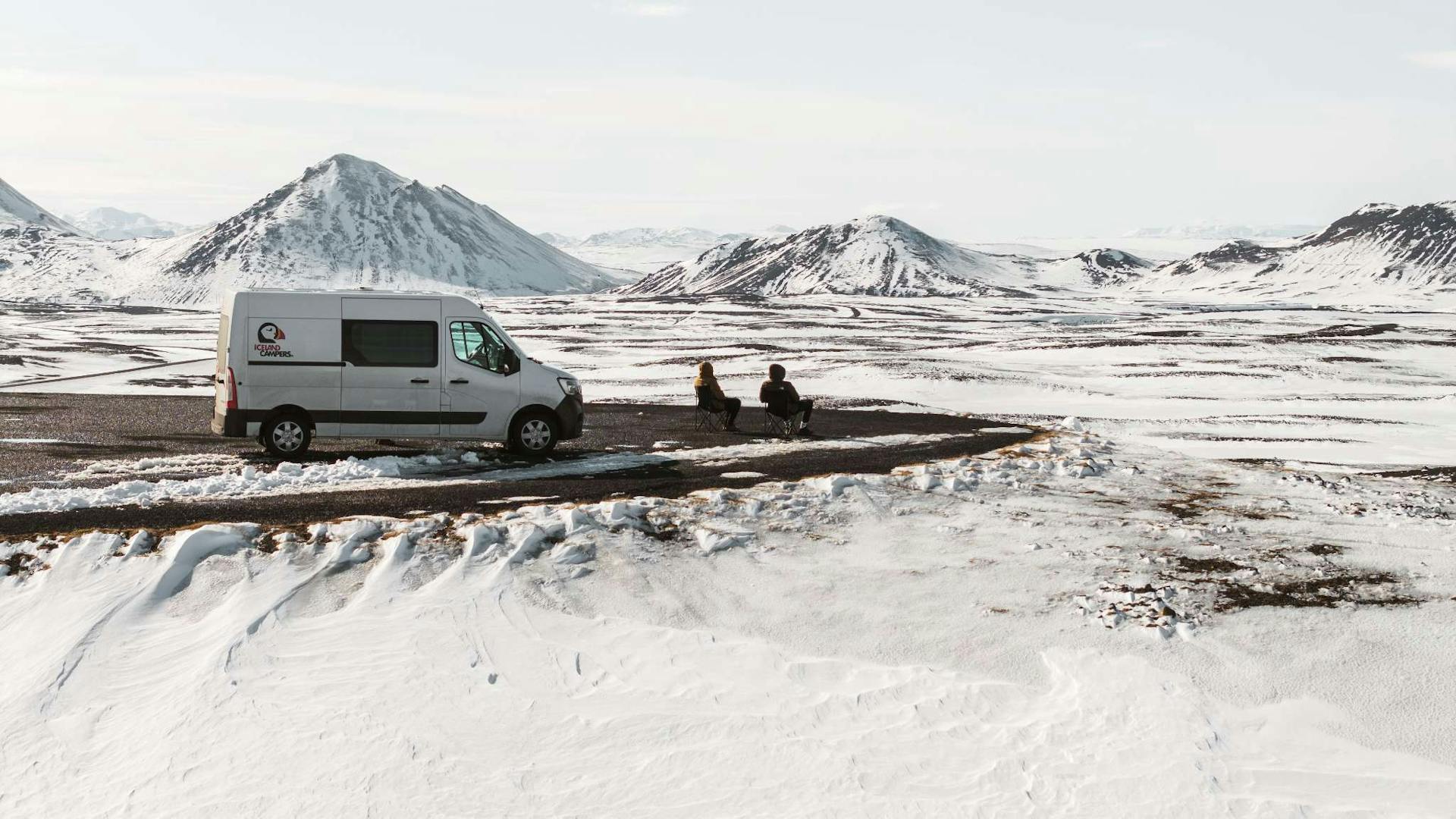
Preparing for F Roads and Why Not All Routes Are Accessible by Camper
An important note: campers are not designed for F roads or rough mountain passes. These routes require specialized 4×4 vehicles, and driving a camper on them can void insurance and lead to fines.
Stick to the main ring road and side routes that are marked safe for standard vehicles. With that limitation in mind, you can still reach almost all major attractions in Iceland. The same things that make campers comfortable—extra weight, interior fittings—are exactly what make them unsuitable for off-road adventures.
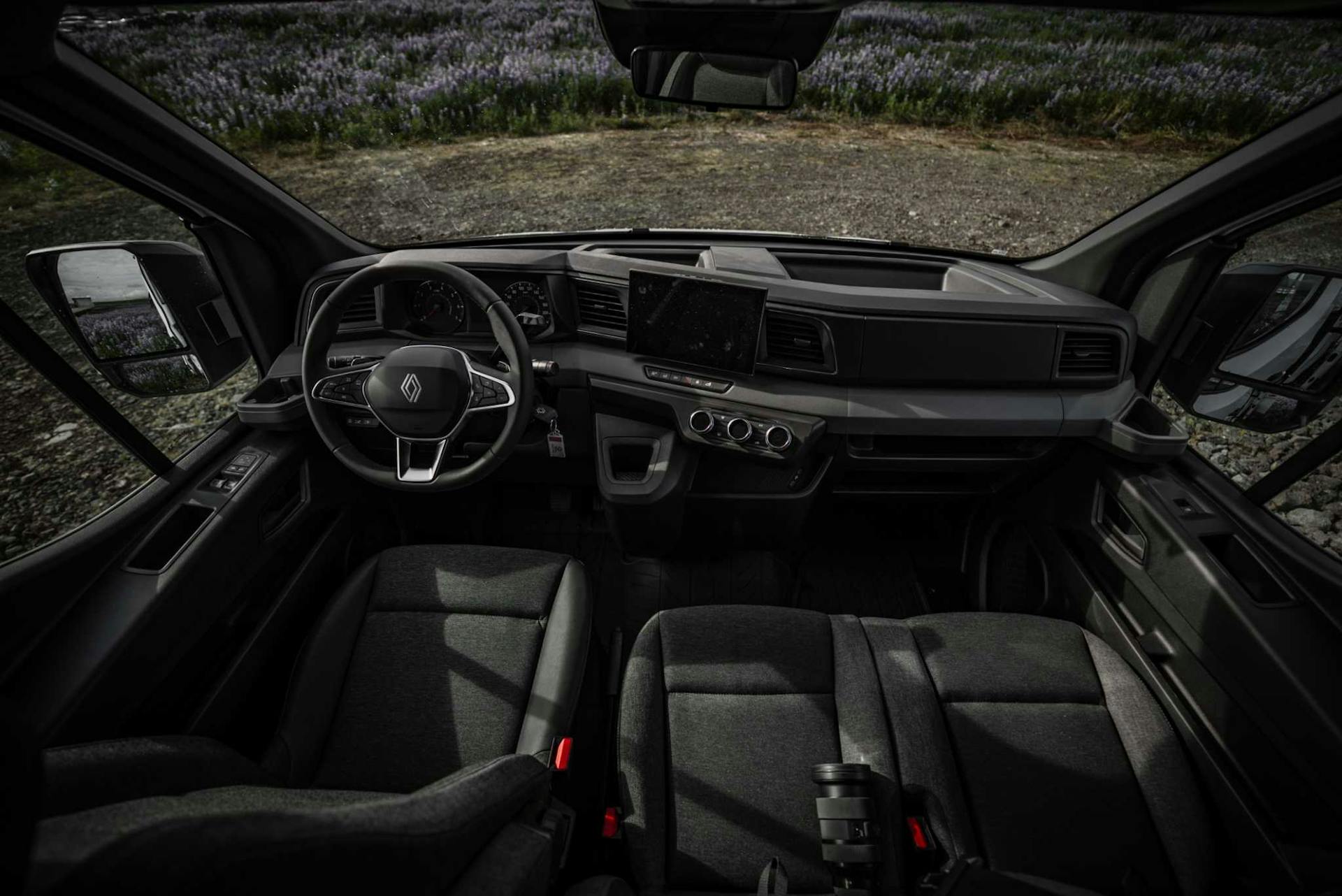
Booking Campsites in Peak Season and Low Season
During peak season (June–August), campsites near popular spots like Diamond Beach or the Golden Circle can get busy. It’s wise to book campsites ahead if you want guaranteed spots.
In the low season, you’ll find fewer people and more flexibility, but not all campsites stay open year-round. Always check availability before you set out. Either way, knowing where you’ll spend the night makes your trip in Iceland smoother.
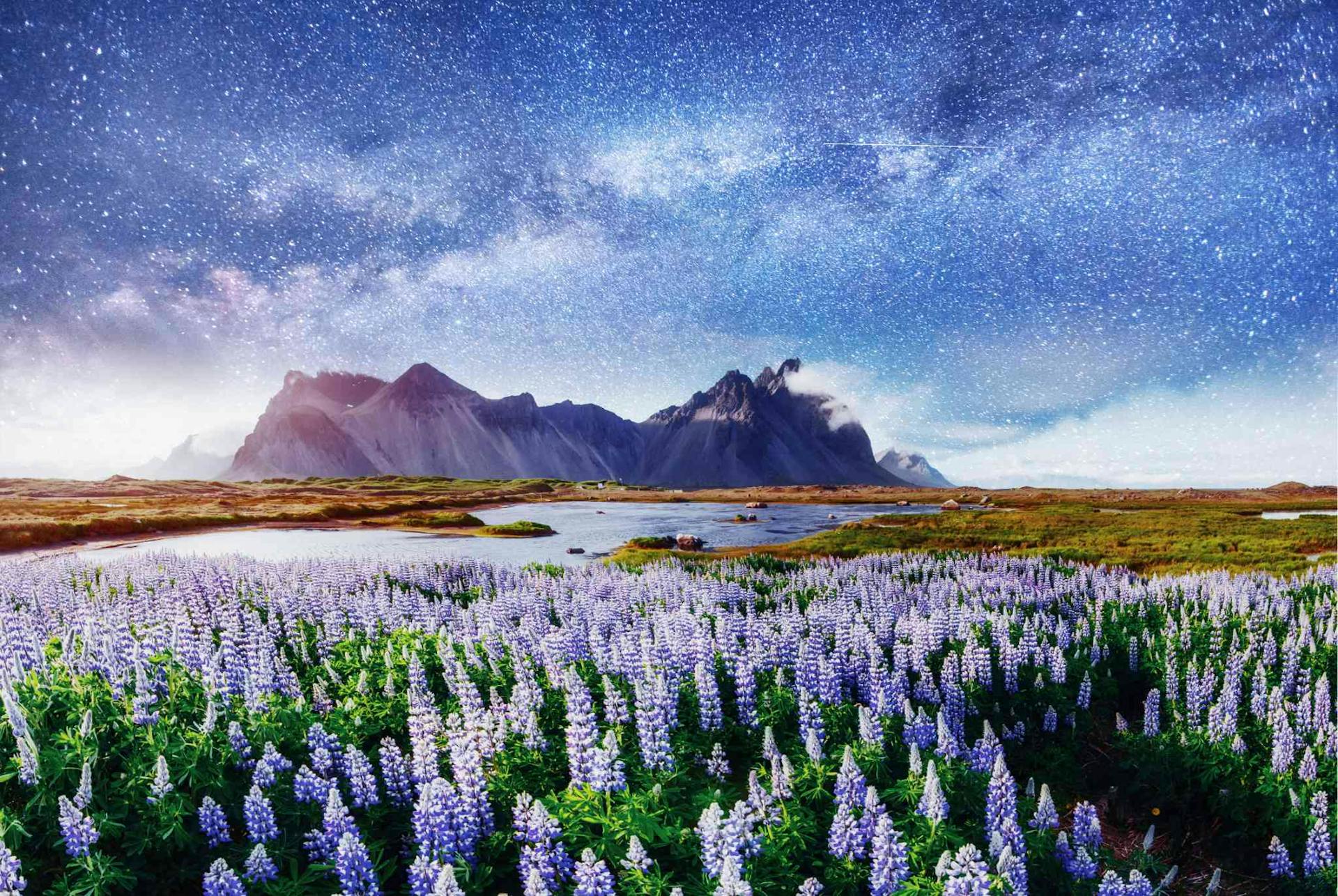
The Snæfellsnes Peninsula by Camper Van
The Snæfellsnes Peninsula is often called “Iceland in Miniature” because it contains so many of the landscapes you’ll find on the iceland ring road: volcanoes, glaciers, black sand beaches, cliffs, and quaint villages. Driving here in a camper van is pure joy, with plenty of opportunities to stop at viewpoints, cook a meal, or take a short walk to hidden gems.
Campsites on the peninsula offer stunning settings, from ocean views to mountain backdrops. Spending a few nights here allows you to explore highlights like Kirkjufell, Djúpalónssandur, and Snæfellsjökull National Park.
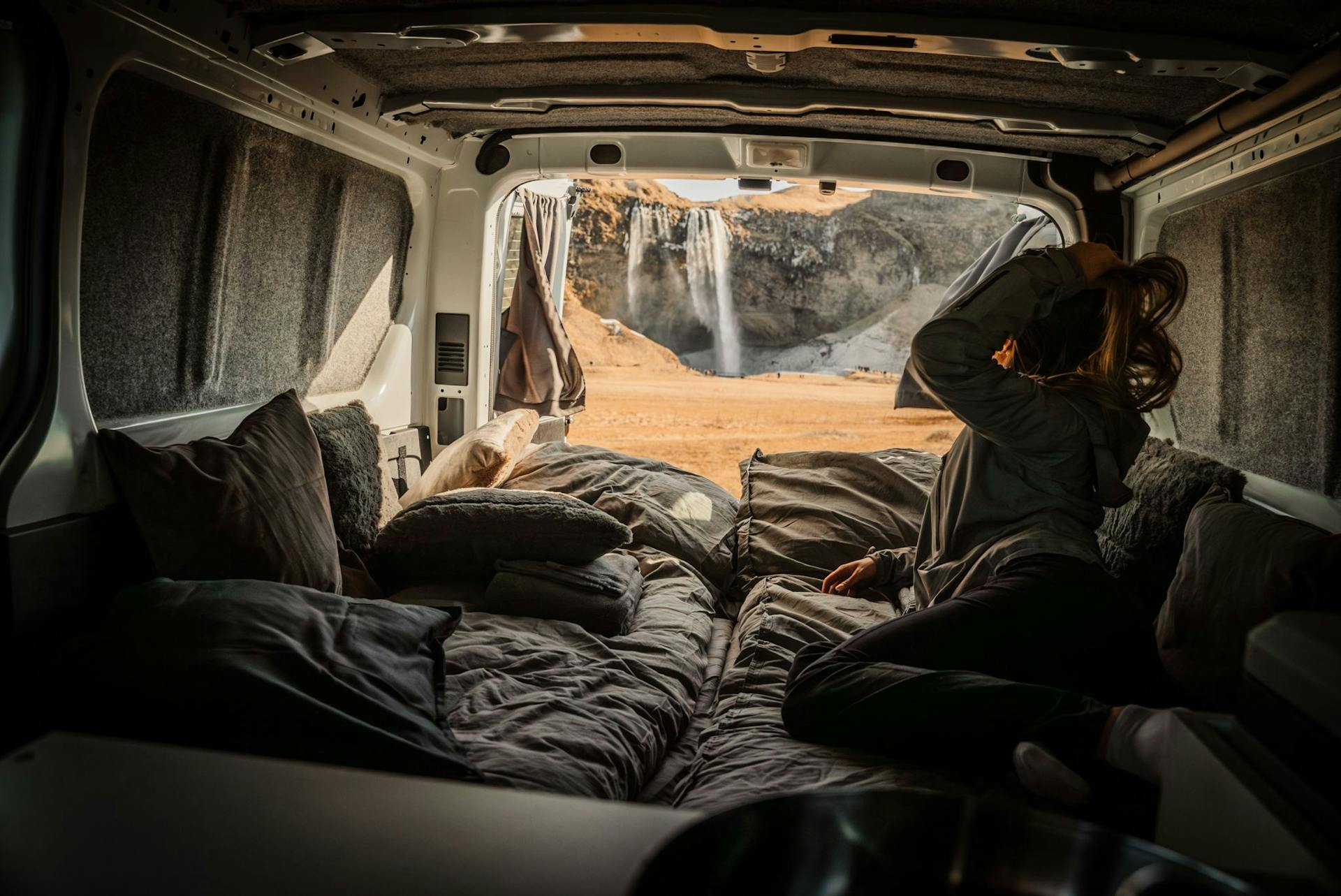
Reynisfjara Beach on Your Campervan Trip
One of the most famous stops on the south coast is Reynisfjara beach, known for its black sands and powerful waves. The huge basalt columns lining the shore give it an otherworldly feel, and it’s a highlight on any campervan trip.
Parking is available in a parking area, but be cautious: the waves here are dangerous and unpredictable. Enjoy the scenery, take photos, and then retreat to the safety of your camper for a warm drink before continuing your road trip.
Relaxing in Iceland’s Hot Springs After a Long Drive
After a day of exploring, nothing feels better than soaking in hot springs. Iceland is full of natural pools, from famous spots like the Blue Lagoon to lesser-known geothermal baths in the countryside.
Traveling by camper makes it easy to reach them. You can pull into a nearby car park, change into flip flops, and enjoy a soak under the open sky. Afterward, you’ll return to your camper, cook dinner, and settle in for another cozy night. It’s this rhythm of discovery and relaxation that makes an iceland road trip unforgettable.

Meeting Happy Campers Along the Way
One of the unexpected joys of camper travel is the community. At each campsite, you’ll meet happy campers from around the world. Sharing a kitchen with strangers, swapping tips about favourite stops, or laughing about the challenges of heavy rain builds connections you’ll remember long after your trip in Iceland is over.
Some travelers compare notes about kuku campers or other rental companies, while others simply offer a smile and advice on the best gas stations or scenic detours. These encounters add richness to your journey.
Packing Essentials for Camper Travel
- Flip flops for campsite showers
- A reliable power bank for devices when away from charging points
- Warm clothing for a surprise cold night
- Food supplies to reduce unnecessary stops at a gas station
- Patience and flexibility—the heart of any road trip
Why This Will Be a Wonderful Trip
A camper adventure in Iceland is more than a holiday—it’s a chance to live freely, connect with nature, and embrace the unexpected. Whether it’s waking up beside glaciers, watching the northern lights, or exploring stuðlagil canyon on a sunny afternoon, every day offers something new.
With a camper, you’ll experience the country on your own terms. You’ll have the comfort of more space in a bigger van, the joy of meeting other campers, and the satisfaction of knowing your journey is entirely yours.
So pack your bags, bring your sense of adventure, and get ready for one of the most rewarding experiences you’ll ever have: exploring Iceland in a camper.

Your Adventure Awaits
Imagine waking up on the edge of a fjord, the sun just peeking over the horizon, steam rising from your coffee as the day begins. A few days later, you might be walking along Diamond Beach, watching chunks of ice sparkle against black sand. Or maybe you’re ending your evening in Skaftafell National Park, stretching your legs after a hike to a beautiful waterfall, before heading back to your camper for a cozy meal and a hot shower.
That’s the magic of a camper journey around Iceland—you’re not just passing through, you’re living inside the landscape. Every first night, every sunrise, every spontaneous stop becomes part of the story.
By the end of your iceland road trip, you’ll understand why so many travelers call it the highlight of their lives. It’s not just about seeing famous places like the Golden Circle or the Snæfellsnes Peninsula. It’s about the feeling of freedom, the joy of discovering hidden corners, and the memories you’ll carry long after you’ve left the island.
Your camper is more than a vehicle—it’s your home, your travel partner, and your key to creating a wonderful trip through the land of fire and ice. The adventure is waiting. All that’s left is for you to take the wheel.
FAQs About Campervan Travel in Iceland
Is a Campervan Worth It for an Iceland Road Trip?
Absolutely. While a rental car and hotels can work, the camper experience combines transport and accommodation into one. With a camper, you decide where to go, how long to stay, and where to sleep. That freedom makes your trip feel more like an adventure and less like a schedule.
Can You Sleep in a Campervan Anywhere or Only at Campsites?
You cannot simply sleep anywhere. While a car park or parking area may seem convenient, rules in Iceland are strict. Overnight stays are allowed only at designated campsites or with explicit landowner permission. The good news is there are many campsites along the ring road trip, so you’ll never be far from a safe and legal place to spend the night.
Can You Take a Campervan to Iceland?
Most travelers rent locally, since flying your own vehicle to Iceland is costly and complicated. Instead, renting a camper here is far simpler. We handle everything—from airport pickup to extras like bedding or a roof tent. With your own campervan ready when you arrive, you can focus on the journey, not the logistics.
Can Campervans Go on F Roads in Iceland?
No. F roads and mountain passes are reserved for 4×4 vehicles. Taking a camper on these roads can lead to damage, fines, and insurance problems. Stick to the main ring road and approved side routes. The same things that make campers comfortable—interiors, weight, and size—are what make them unsuitable for rugged terrain.